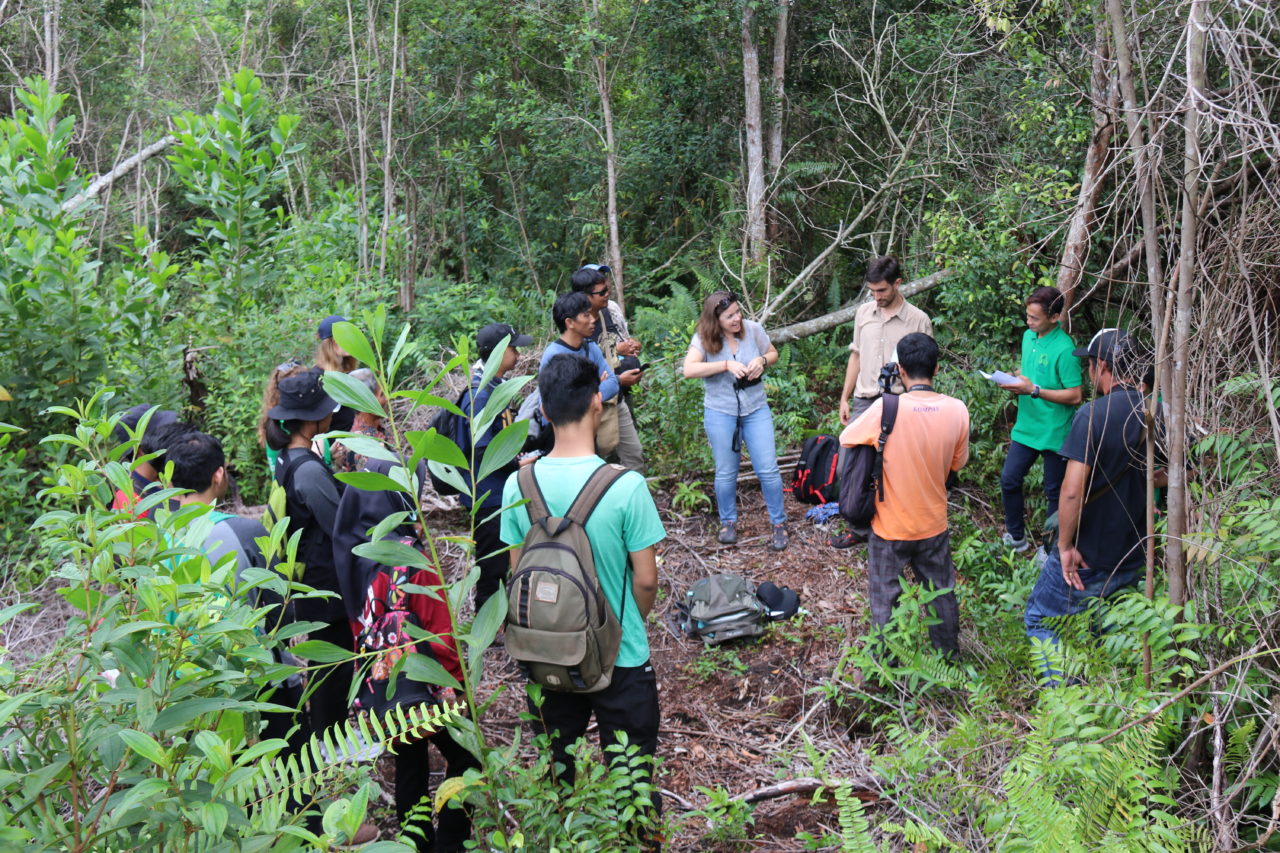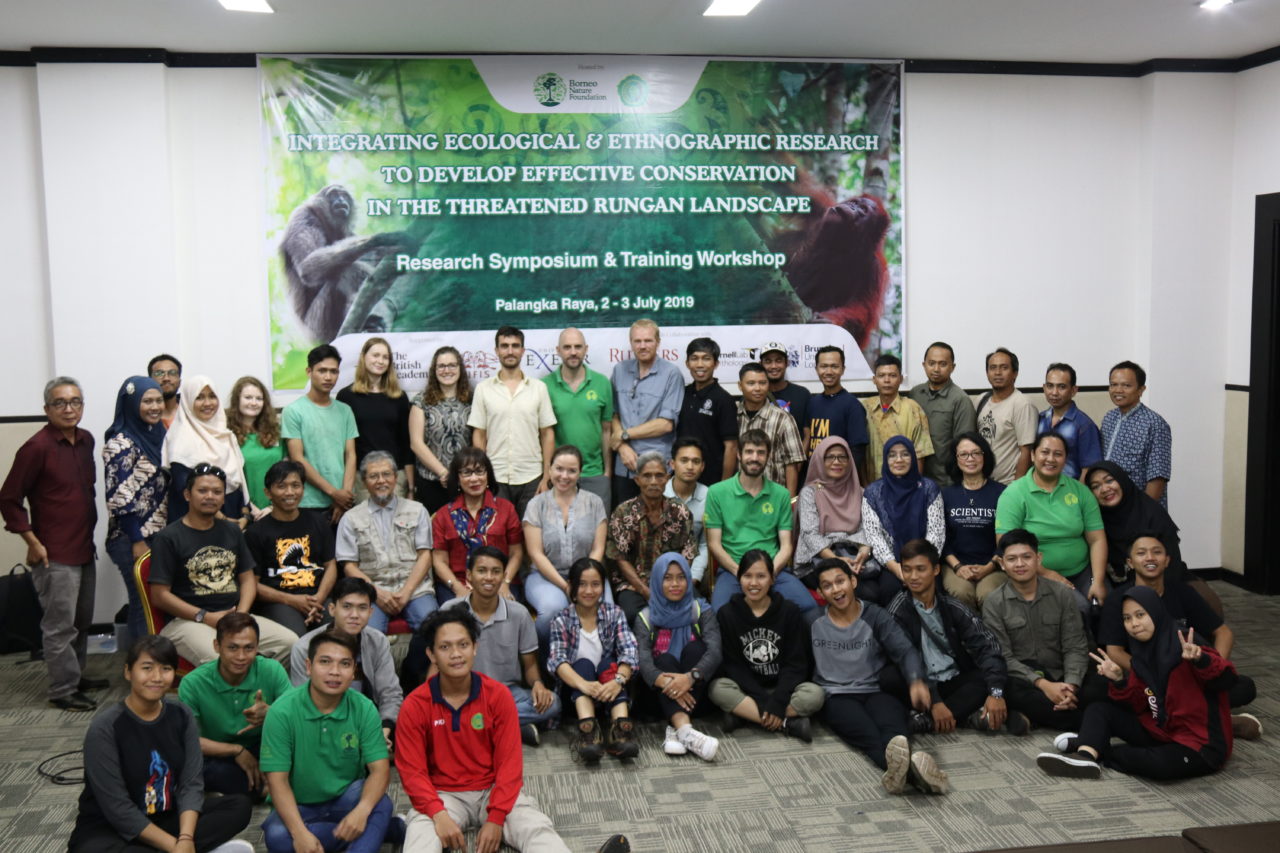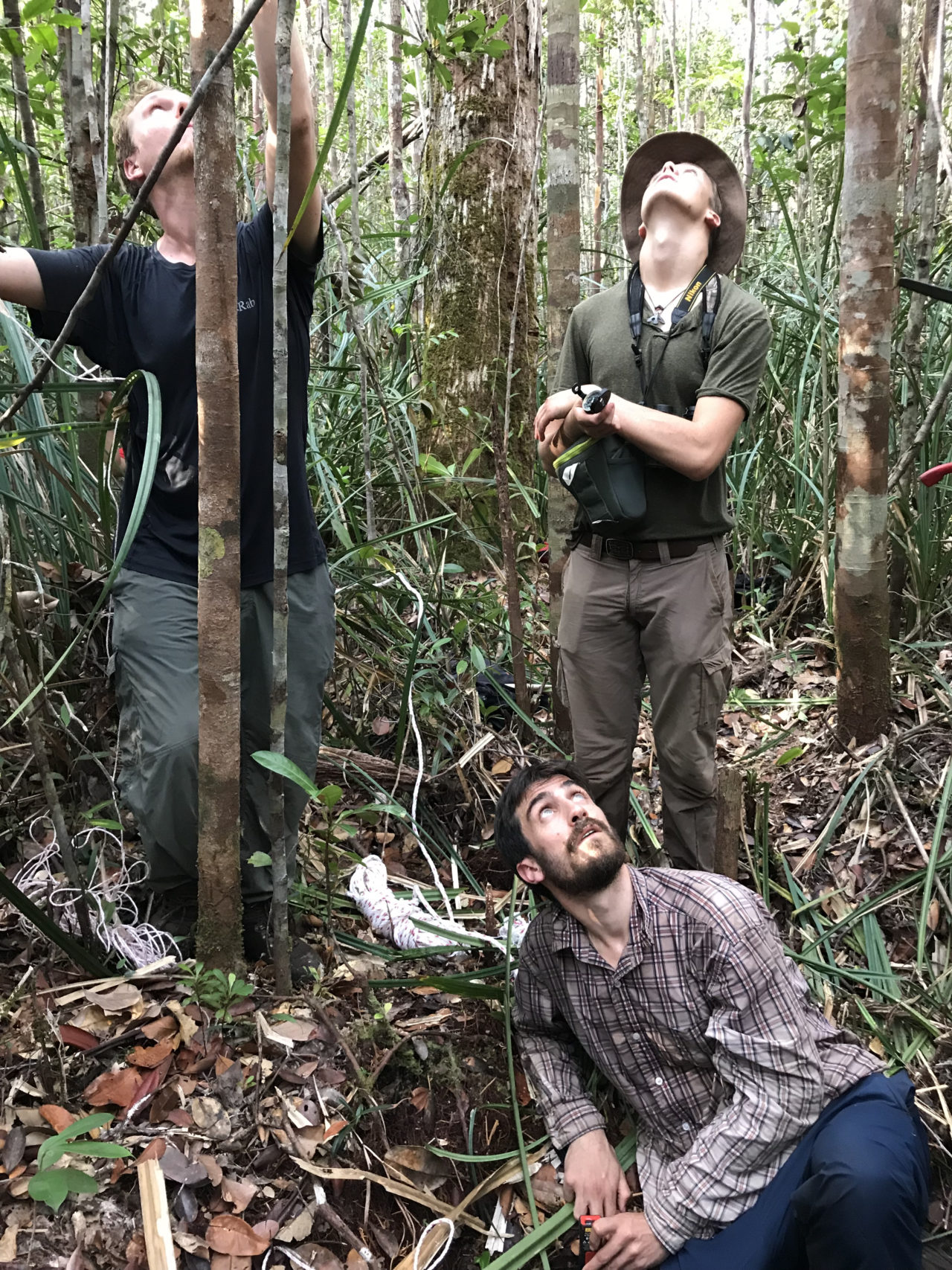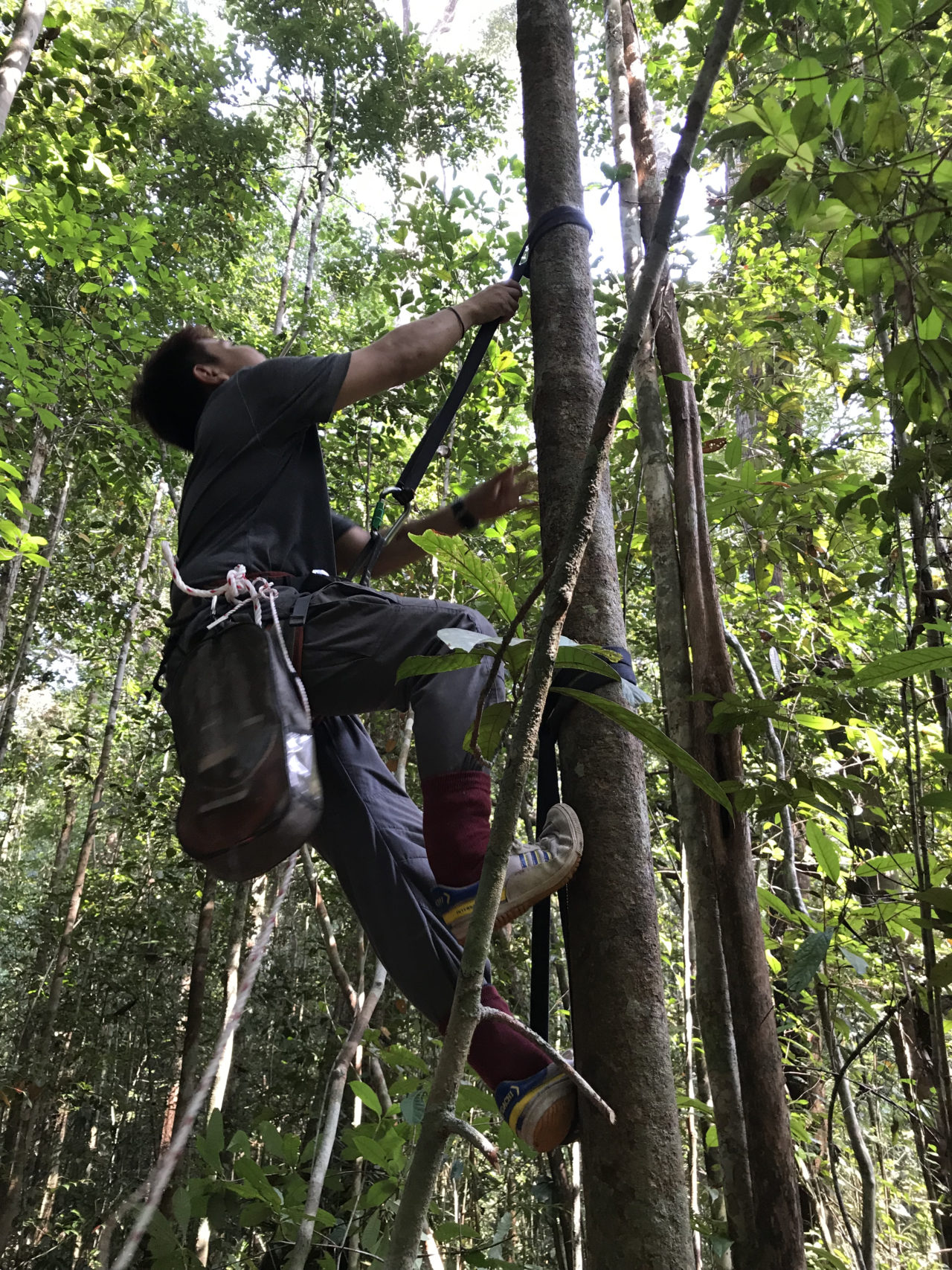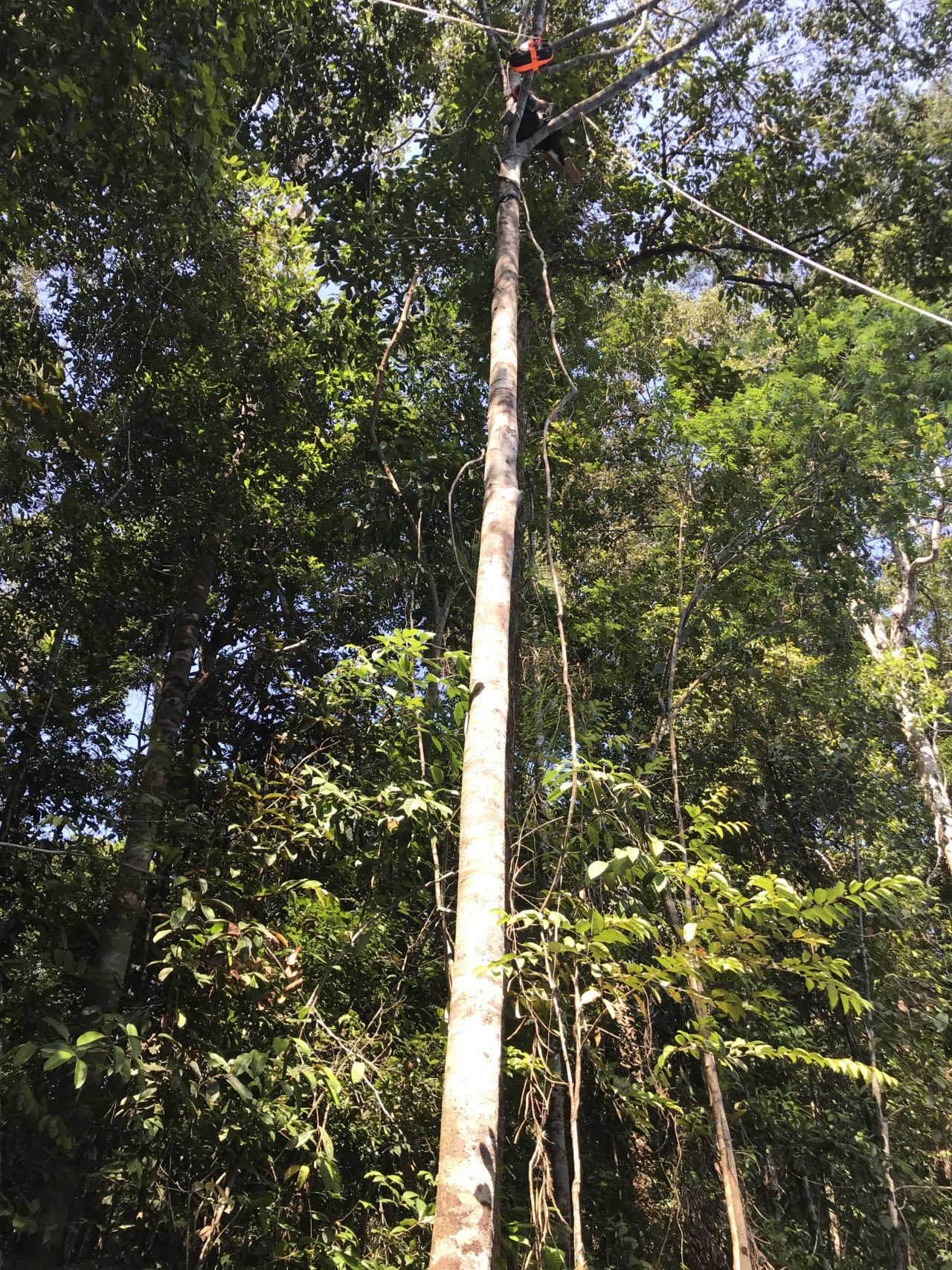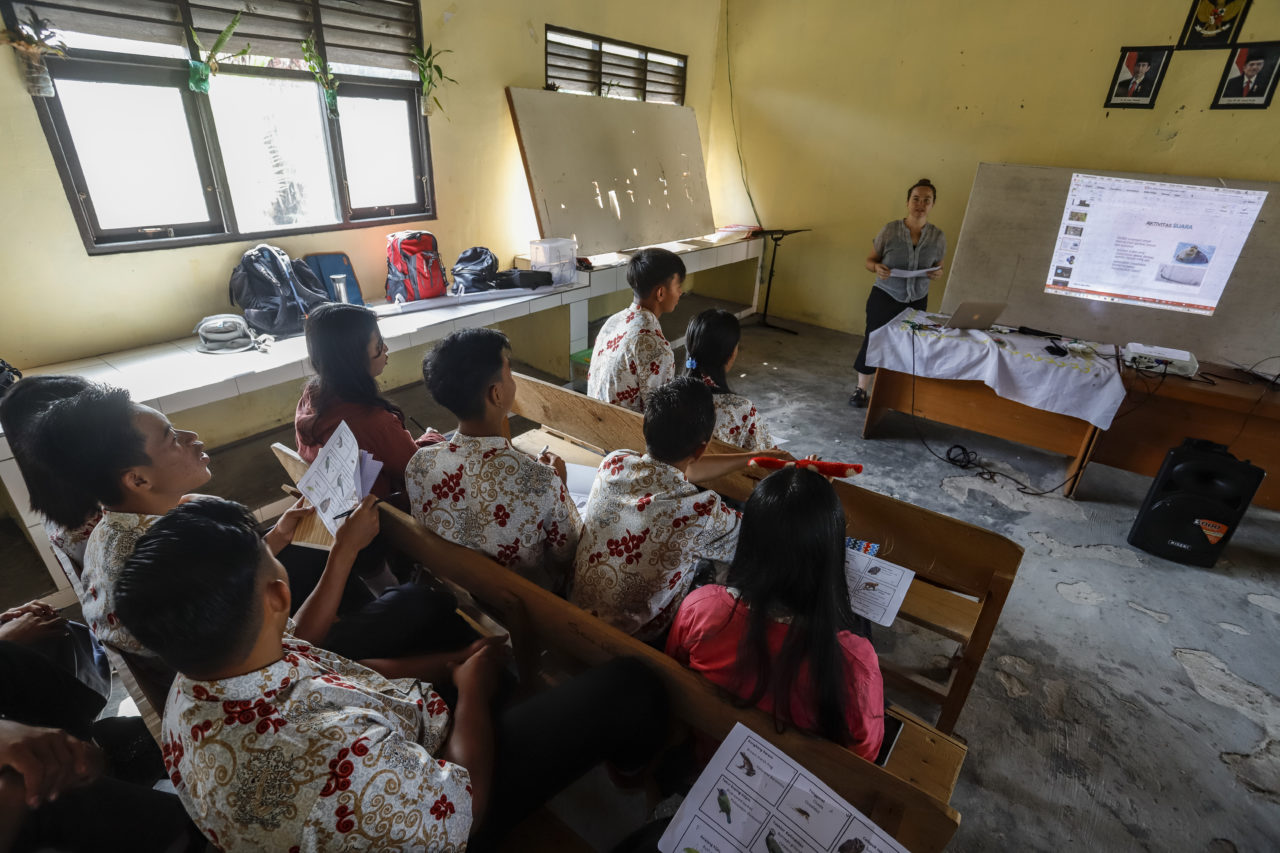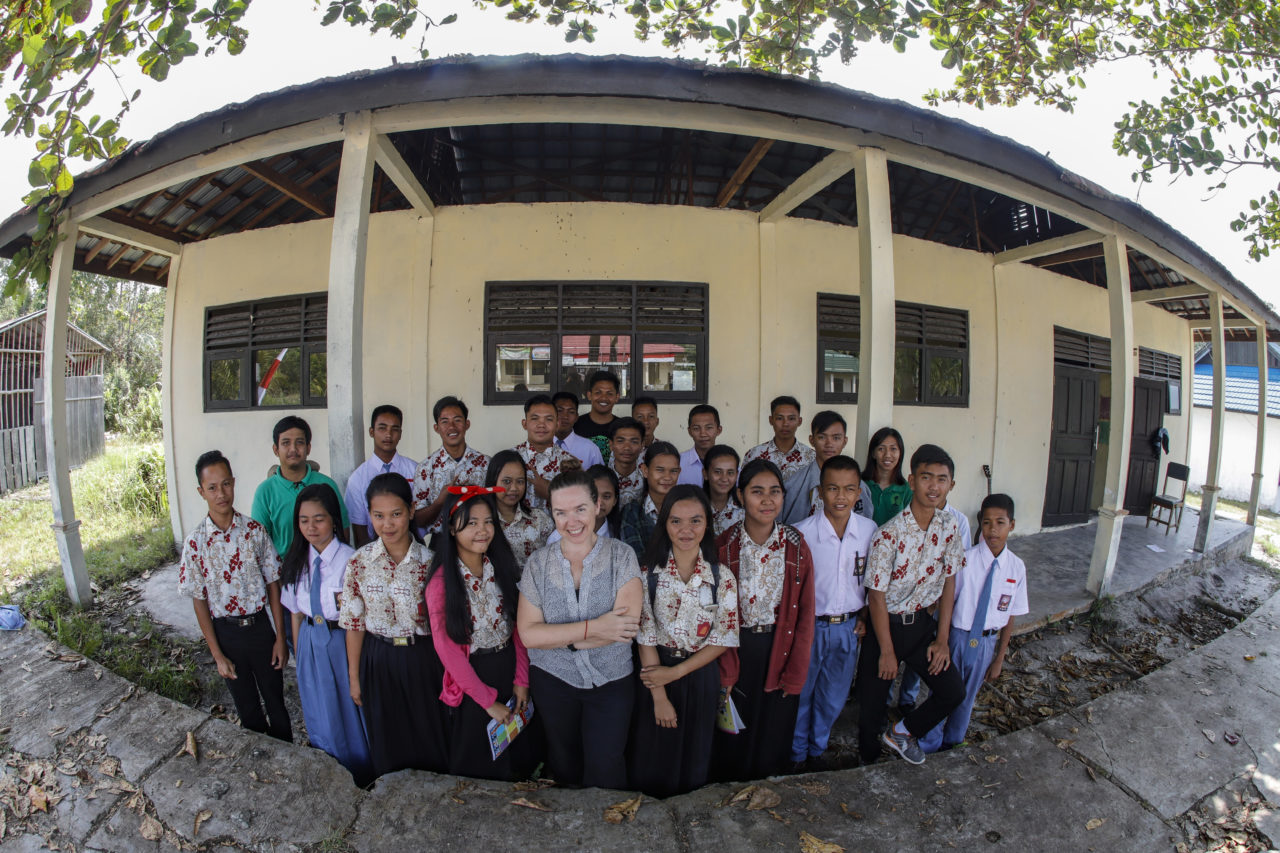Making waves with sound in Borneo
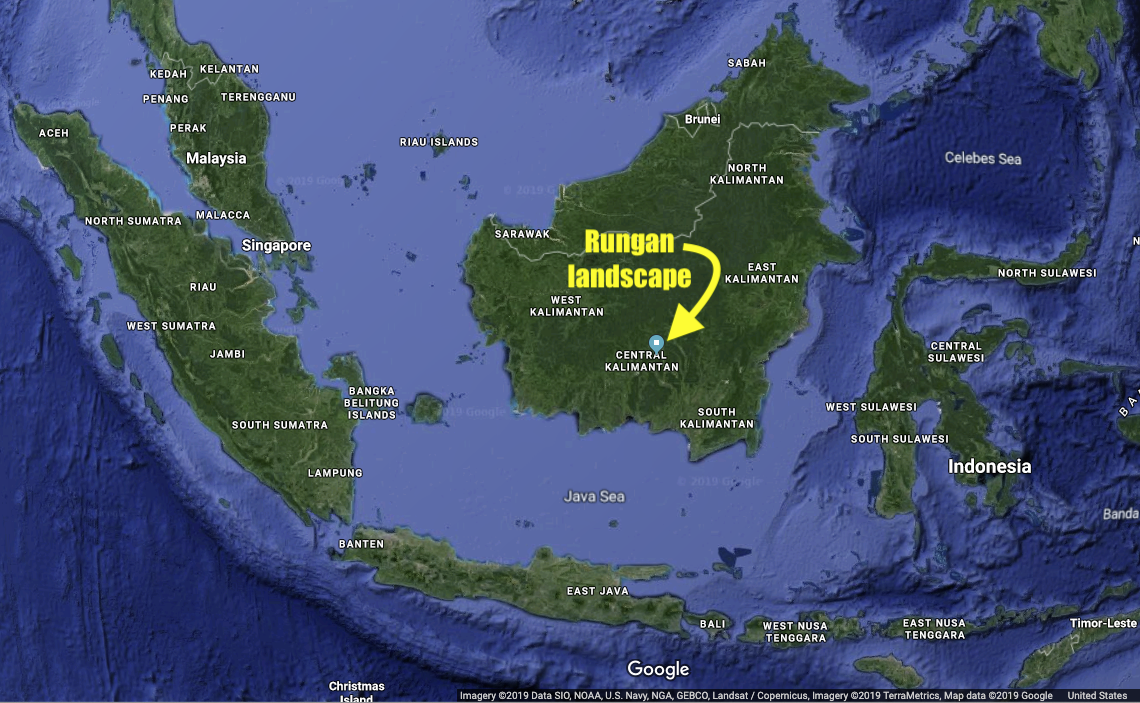
This summer, I traveled to the far-away island of Borneo to practice and promote the use of sound for studying and solving some of Indonesia’s biggest conservation challenges. Since 2018, I have been conducting bioacoustics research within the 135,000-hectare Rungan landscape in Central Kalimantan, most of which — despite housing incredible biodiversity, including the largest unprotected population of Bornean orangutans — is earmarked for logging and oil-palm or wood-pulp plantation conversion. Indigenous Dayak communities inhabit these areas as well, where they make their livings through small-scale mining, fishing, farming, and collecting non-timber forest products. The challenge there is to develop a conservation plan that incorporates the values and needs of local people and to support sustainable exploitation of environmental resources. To accomplish this, I’ve teamed up with some exceptional people and institutions to study endangered wildlife, train conservation practitioners, and connect with young people in local communities — all of this using the power of bioacoustics!
Building research capacity & conservation partnerships
To kick off the field season, my collaborators and I organized a multi-stakeholder outreach and engagement event aimed to expand the breadth and promote the findings of our conservation research program in the Rungan landscape. On the first day, scientists and practitioners from Indonesia, England, and the U.S. spoke about our diverse perspectives on and approaches to conservation, including the potential for bioacoustics research to document rare and endangered wildlife and identify conservation priorities. On day two, we hosted training workshops covering diverse research approaches to conservation, including bioacoustics, ethnography, and habitat monitoring. Our group learned the basic theories and key tools for bioacoustics research, took a field trip to a degraded urban forest to deploy a SWIFT recorder, practiced identifying target species from sound recordings in Raven, and formed a bioacoustics working group to promote capacity development and future research collaboration across diverse conservation challenges in Indonesia. We finished the program with an inspiring discussion among all participants — representing universities, national and regional governments, NGO’s, local communities, the private sector, and media — about the value of integrating multiple disciplines and values to develop conservation plans. The group expressed great enthusiasm about the idea of formalizing this event into an annual meeting — a great idea!

Workshop participants learn how to deploy SWIFT recorder (photo by Borneo Nature Foundation) 
The inspiring teachers, facilitators, and participants from Indonesia and abroad (photo by Borneo Nature Foundation)
Studying the sounds of Borneo’s forests & freshwater habitats

Playback team sets the speaker height and orientation (photo by Wendy Erb) 
Local research staff member, Rido, climbs a tree to mount a pulley for the speaker (photo by Wendy Erb) 
Speaker raised to 10 meters in the canopy to play gibbon songs and orangutan long calls (photo by Wendy Erb)
During the second phase of my trip, I got into the really fun stuff — fieldwork!! And I was beyond excited to team up with a bird whiz, my esteemed colleague Nick Boyd, whose encyclopedic knowledge about Borneo’s birds’ sounds is astounding. Nick and I worked together to train local field staff and students at the Borneo Nature Foundation’s Mungku Baru and Sebangau field stations to identify birds by sight and sound in the field and to recognize the spectrograms of their sounds using Raven. We have started reviewing sound recordings from the last twelve months in the hopes of documenting spatial and temporal variation in target bird species’ presence and behavior. I also worked to document some of Borneo’s underwater life in several small rivers and forest pools surrounding our research camp using a hydrophone and SWIFT recorder. We hope to make important discoveries about the acoustic behavior of Borneo’s freshwater fish — a vast and yet unexplored area of research. We are excited to continue to develop new studies of the spectacular avifauna and piscifauna in the Rungan landscape in the near future!
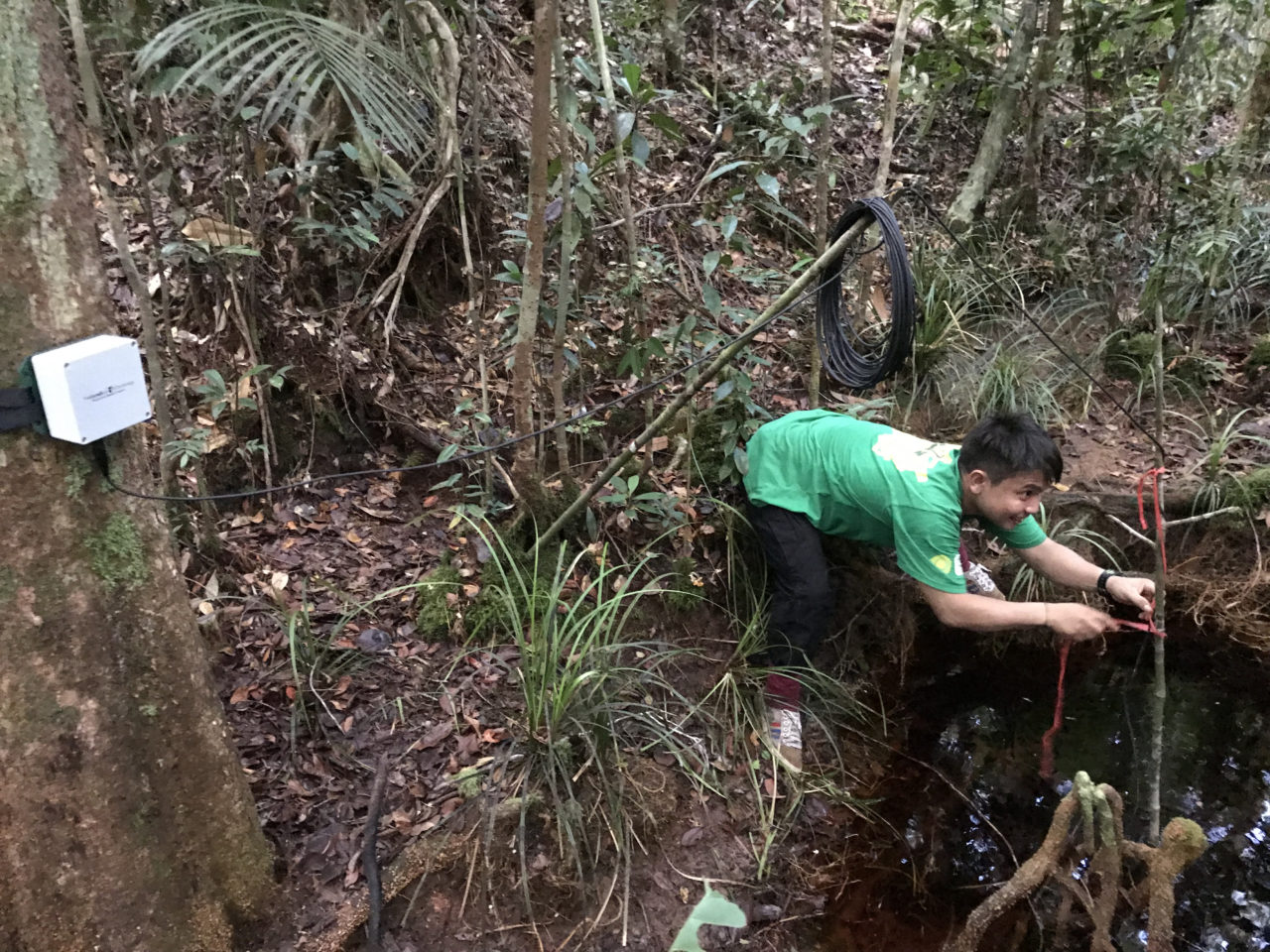
Let me tell you about the REALLY fun stuff from this trip — playbacks! I conducted a series of playback experiments designed to test the transmission of gibbon and orangutan long calls across different heights, habitats, and times of day. My team included local research staff, students and faculty from local universities, and volunteers from Europe who came out for two weeks to support the Borneo Nature Foundation’s research activities at the field site. Together, we traversed the 900-hectare area for two straight weeks (11-12 hours/day) to reach our playback targets.
The work involved hauling a lot of equipment, climbing a lot of trees, pulling a lot of ropes, and listening to a lot of recordings of ape calls. We even squeezed in a two-night camping trip, just for fun (or possibly because we couldn’t bear the trek back and forth to camp through the dense peat swamp across multiple days to reach the far-flung playback sites). But in the end, we did (most of) what I’d hoped to accomplish, and I can’t wait to start looking at our results in the coming weeks! For that, I must convey a heartfelt thanks to the heroes of “team acoustics” (Erik, Rido, and Amir) who carried heavy equipment, scaled tall trees, and built our beautiful bush camp — I couldn’t have done any of this work without their constant support (terima kasih banyak, teman-teman)!
Sharing the wonder of animal sounds
In July, I teamed up with the Borneo Nature Foundation to teach high school students in the Mungku Baru village about the wonders of bioacoustics. I developed an interactive sound-filled curriculum to increase students’ knowledge about and interest in local biodiversity. We talked about the diverse ways that animals produce and use sounds in their daily lives — to find mates, defend territories, locate food, and more. To test their biodiversity awareness, students played a game in which they worked in pairs to match sounds and photos of animals. Much to my amazement, the class scored 100% on this activity, successfully identifying all of the insects, amphibians, birds, and mammals they heard! I then spoke to the class about how scientists can use sound to understand animal behavior and ecology and how this research can help us understand the ways that humans are impacting wildlife and their habitats. To demonstrate this, blindfolded students were tasked with finding their calling group mates (each group was assigned a different species to imitate). In the first trial, students easily found their friends, even amidst the cacophony of animal sounds, but when we broadcast the sounds of logging and mining, they were no longer able to localize their group mates. We reflected together on how human noise can disrupt animals’ lives, which local species’ sounds they’d most like to study (orangutans, clouded leopards, and fish were most popular), and what actions they could personally take to conserve nature. It was truly an inspiration to witness these young people make new connections to science, biodiversity, and conservation in their own communities and lives.
This summer, I discovered that sounds are an awesome way to help connect people with forests, wildlife, science, and each other. I’m looking forward to continuing to explore the potential of sounds to make waves in biodiversity conservation in Indonesia, as I join forces with the inspiring hearts and minds at the Center for Conservation Bioacoustics!

Wendy talking to Mungku Baru high school students about how animals use sound to communicate in tropical forests (photo by Duncan Murrell) 
Wendy and Borneo Nature Foundation’s education team connect with Mungku Baru’s youth (photo by Duncan Murrell)
Note: To learn more about Wendy’s work, please visit her staff profile and follow her on social media. Also, you can see video clips of her field work via this link.


